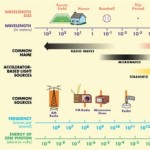- This topic has 27 replies, 8 voices, and was last updated 7 years, 10 months ago by
 burhan num mina llah.
burhan num mina llah.
-
AuthorPosts
-
-
May 6, 2016 at 11:49 pm #38974
 umer ashraf waniParticipant
umer ashraf waniParticipantsince eye safety is one of the major issue which limits the power level so which laser should i incorporate for optimum solution.
regards
umer -
May 7, 2016 at 11:48 pm #38985
 prakash jatParticipant
prakash jatParticipanthi umer
you should choose class 1 type of laser with power < 10 mw for 1550 nm and < .22 mw for 850 nm( these all for eye saftey) -
May 8, 2016 at 1:48 am #38988
 burhan num mina llahParticipant
burhan num mina llahParticipantHello Umer,
Mostly semiconductor lasers are used for FSO. There are several advantages of semiconductor lasers for free space optics (FSO) compared to LEDs: Better optical spectrum, high optical output, advantages for beam shaping, and so on. There are several atmospheric transmission windows and high quality semiconductor lasers with a suitable wavelength for these windows are available.
One big advantage of FSO is the possibility to install a link within hours because there are no construction permits and time consuming construction work necessary.
There are disadvantages as well: The availability of the link is less than 100% especially in regions with fog, sand storms, and so on. A work around is the combination of a FSO link with a microwave link. It increases the availability of the link to nearly 100%.I hope this would give you some idea.
Regards
Burhan -
May 8, 2016 at 1:52 am #38989
 burhan num mina llahParticipant
burhan num mina llahParticipantHello Umer,
I would also like to mention that semiconductor laser , for instance VCSEL array has been proposed as a concept of a compact FSO communications terminal thanks to their high reliability and high-speed modulation (2.5 Gb/s) under high optical power operation (Advanced Free Space Optics (FSO))
also some attractive features of semiconductor lasers, for instance the chaotic dynamics with and without an external perturbation make them an attractive devices and have become widely use in FSO system.Most commonly used lasers in today’s commercial FSO products are:
– Edge Emitting Lasers
– VCSEL
VCSEL is easier to modulate, but generally much lower in power, which limits link budgets, beamwidths and useful operational distances.
This is why most successful long range FSO devices use edge emitting lasers.
There are also some novel types of lasers considered including VECSEL, which we collaborated on two recent projects which were aimed to develop the actual devices.I hope it will be of some help to you.
Regards
Burhan -
May 8, 2016 at 7:18 am #39001
 Naazira BadarParticipant
Naazira BadarParticipantHello umer ashraf wani
Well yeah… safety is a major concern. But wavelengths greater than 1400 nm help us avoid health hazards due to laser power because at these wavelengths the absortion coefficient by the eye is very high..so negligible amount of laser power is able to reach the cornea.
Regards
Naazira Badar -
May 8, 2016 at 9:17 am #39002
 umer ashraf waniParticipant
umer ashraf waniParticipantcan u mention the upper power limit
also i have one more query regarding Band width of WDM and channel spacing
If i am simulating an 8 channel WDM system with frequency varying from 193.1 to 193.8, what should be the BW of Multiplexr? 10Ghz r 80Ghz
and how can i simulate the same system for different channel spacing. kindly let me know.
regards
umer ashraf-
May 9, 2016 at 12:39 am #39007
 burhan num mina llahParticipant
burhan num mina llahParticipantHello Umer,
I have already replied to your query in other thread. Still for your convenience i will repost it here. In addition to that, i would suggest you to use 10 to 20 GHz bandwidth not 80 Ghz.
Well as far as your query regarding bandwidth of Multiplexer is concerned, i would like to mention that the bandwidth of a Multiplexer or a Demultiplexer actually refers to the bandwidth of the filters used for each channel of the implemented WDM system whereas the bandwidth in some other components such as amplifiers is the bandwidth of operation of that specific component.
i will suggest you to increase the bandwidth from 10 GHz which is a default value to 20 GHz and check for the results. In my opinion, When the bandwidth is reduced, many signals with higher frequencies get distorted as they fall out of the pass band of the filter. This means they cannot be correctly detected at the receiver. This is the basic and complete theoretical explanation of why the bandwidth reduction causes system degradation.
I hope this will be helpful. This has been already discussed previously. I will suggest you to go through these links.Regards
Burhan
-
-
May 8, 2016 at 10:56 am #39003
 MHD NAParticipant
MHD NAParticipantDear friend;
Mostly semiconductor lasers are used for FSO. There are several advantages of semiconductor lasers for free space optics (FSO) compared to LEDs: Better optical spectrum, high optical output, advantages for beam shaping, and so on. There are several atmospheric transmission windows and high quality semiconductor lasers with a suitable wavelength for these windows are available.
One big advantage of FSO is the possibility to install a link within hours because there are no construction permits and time consuming construction work necessary. -
May 9, 2016 at 12:45 am #39008
 Hamza Ali Abbas KhanParticipant
Hamza Ali Abbas KhanParticipantHi
I agree with Mr Burhan. You should keep the bandwidth restricted to 15 GHz. I understand your concern about bandwidth of channels but Burhan is right the bandwidth of mux is bandwidth of filter actually. I agree to the point that if the bandwidth is reduced, many signals with higher frequencies get distorted as they fall out of the pass band of the filter. This means they cannot be correctly detected at the receiver.
So i will suggest to use 5 GHz more than the default value.
Hope this will be of some help.
Thanks -
May 9, 2016 at 2:34 am #39010
 umer ashraf waniParticipant
umer ashraf waniParticipantburhan thanks a lot
what about channel spacing -
May 9, 2016 at 4:45 am #39012
 burhan num mina llahParticipant
burhan num mina llahParticipantI am not sure about channel spacing. You may refer to few threads here that mention channel spacing be it equal channel spacing or unequal channel spacing.
Here are few links. You may refer to them
http://link.springer.com/chapter/10.1007%2F978-1-4020-8741-7_1#page-1
https://www.researchgate.net/publication/261320396_Duobinary_modulation_format_and_unequal_channel_spacing_integration_to_suppress_four-wave_mixing_crosstalk_in_WDM_systems
http://ieeexplore.ieee.org/xpl/freeabs_all.jsp?arnumber=5876926&abstractAccess=no&userType=instAlso go through these threads https://optiwave.com/forums/topic/bande-width/
Hope this will be useful.
Regards
Burhan
-
May 9, 2016 at 5:57 am #39016
 umer ashraf waniParticipant
umer ashraf waniParticipantwill go through it
May almighty bless u!
thanks a lot-
May 10, 2016 at 3:28 am #39050
 Hamza Ali Abbas KhanParticipant
Hamza Ali Abbas KhanParticipantHello Umer,
we know that the amount of bandwidth allotted to each channel in a communications system that transmits multiple frequencies such as fiber optics and it is measured as the spacing between center frequencies (or wavelengths) of adjacent channels and this is what we call chnnel spacing. For your convenience you can refer to http://www.pcmag.com/encyclopedia/term/39575/channel-spacingConventional WDM systems provide up to 16 channels in the 3rd transmission window (C-band, around 1550 nm) of silica fibers.
Dense WDM (DWDM) uses the same 3rd transmission window (C-band) but with denser channel spacing. Channel plans vary, but a typical system would use 40 channels at 100 GHz spacing or 80 channels with 50 GHz spacing. Some technologies are capable of 25 GHz spacing (sometimes called ultra dense WDM). New amplification options (Raman amplification) enable the extension of the usable wavelengths to the L-band, more or less doubling these numbers.-
May 10, 2016 at 3:29 am #39051
 Hamza Ali Abbas KhanParticipant
Hamza Ali Abbas KhanParticipantAlso i want to add that Coarse WDM (CWDM) in contrast to conventional WDM and DWDM uses increased channel spacing to allow less sophisticated and thus cheaper transceiver designs. To again provide 16 channels on a single fiber CWDM uses the entire frequency band between 2nd and 3rd transmission window (1310/1550 nm respectively) including both windows (minimum dispersion window and minimum attenuation window) but also the critical area where OH scattering may occur, recommending the use of OH-free silica fibers in case the wavelengths between 2nd and 3rd transmission window shall also be used. Avoiding this region, the channels 31, 49, 51, 53, 55, 57, 59, 61 remain and these are the most commonly used.
I hope this would help.
You can further refer to this link http://www.fiberoptic.com/adt_dwdm.htmThanks
-
-
-
May 9, 2016 at 8:49 am #39024
 burhan num mina llahParticipant
burhan num mina llahParticipantYou are welcome. Cheers
-
May 9, 2016 at 10:40 am #39036
 Naazira BadarParticipant
Naazira BadarParticipantHello Umer Ashraf Wani.
You could use 10 Ghz as well. we have had a number of discussion over wdm MUX bandwidth over here but a conclusive statement could not be reached as to should the BW of WDM-MUX be n x10Ghz , where n is the no. of channels.
Links to few relevant discussions: https://optiwave.com/forums/topic/bandwidth-parameter-for-each-component/
About channel spacing, i believe you need to just change the wavelength to modify the channel spacing, or is it something else that you are asking?
Best Wishes
Naazira Badar -
May 9, 2016 at 11:12 am #39039
 burhan num mina llahParticipant
burhan num mina llahParticipantHello Naazira,
Yes i remember this was discussed previously as well and no conclusion was reached but yeah in my opinion it is the bandwidth of the filter in multiplexer and what confuses us here is that we think the bandwidth should be large enough to accommodate the channels ( be it 4 channels or 8 channels) and we think the bandwidth should be as large as possible but i don’t think it is the case.
Anyway i hope the discussed stuff will help Umer Ashraf in one way or other.Regards
Burhan
-
May 9, 2016 at 12:23 pm #39040
 umer ashraf waniParticipant
umer ashraf waniParticipantwill go through these links
thanks a lot for ur valuable suggestions. -
May 10, 2016 at 12:45 am #39043
 burhan num mina llahParticipant
burhan num mina llahParticipantYou are welcome anytime. The forum is a platform for the same.
Healthy discussions are always welcome.Regards
-
May 10, 2016 at 4:59 am #39052
 umer ashraf waniParticipant
umer ashraf waniParticipanthamza ali sahab
i have done it
thanks alot-
May 11, 2016 at 12:50 am #39085
 Hamza Ali Abbas KhanParticipant
Hamza Ali Abbas KhanParticipantYou are welcome Umer.
I hope you have got an idea now. You may refer to various papers regarding this.Thanks
-
-
May 11, 2016 at 12:04 am #39072
 Aabid BabaParticipant
Aabid BabaParticipantHello everyone,
As mentioned by other forum members about this topic being discussed already i would like to add here that the bandwidth of a Multiplexer or a demultiplexer refers to the bandwidth of the filters used for each channel of the implemented WDM system, whereas the bandwidth in some other components such as amplifiers is the bandwidth of operation of that specific component. There was a lot of confusion regarding this topic and as mentioned by naazira no conclusion was reached. I would suggest you to look at the links and go through them. May be these can help you.I Hope this will be helpful in some or the other way.
Regards -
May 11, 2016 at 2:38 am #39087
 Karan AhujaSpectator
Karan AhujaSpectatorHello,
As far as Lasers for FSO are concerned, Free-space laser communication offers an attractive alternative for transferring high-bandwidth data when fiber optic cable is neither practical nor feasible. However, there are a variety of deleterious features of the atmospheric channel that may lead to serious signal fading, and even the complete loss of signal altogether. Physical obstructions—such as birds, insects, tree limbs, or other factors—can temporarily or permanently block the laser line-of-sight. Platform/building motion due to wind, differential heating and cooling, or ground motion over time can result in serious misalignment of fixed-position laser communication systems. But most importantly of all, absorption and scattering due to particulate matter in the atmosphere may significantly decrease the transmitted optical signal, while random atmospheric distortions due to optical turbulence can severely degrade the wave-front quality of a signal-carrying laser beam, causing intensity fading and random signal losses at the receiver.
You may refer to http://link.springer.com/chapter/10.1007/978-0-387-28677-8_2Regards
-
May 11, 2016 at 2:42 am #39088
 Karan AhujaSpectator
Karan AhujaSpectatorMost commonly used lasers in today’s commercial FSO products are:
Edge Emitting Lasers
VCSEL
A vertical-external-cavity surface-emitting-laser (VECSEL) is a small semiconductor laser similar to a vertical-cavity surface-emitting laser (VCSEL). VECSELs are used primarily as near infrared devices in laser cooling and spectroscopy, but have also been explored for applications such as telecommunications.
One of the most interesting features of any VECSEL is the thinness of the semiconductor gain region in the direction of propagation, less than 100 nm. In contrast, a conventional in-plane semiconductor laser entails light propagation over distances of from 250 µm upward to 2 mm or longer. The significance of the short propagation distance is that it causes the effect of “antiguiding” nonlinearities (the same phenomenon is coincidentally quantified by the linewidth enhancement factor relating to Mooradian’s above-mentioned earlier work) in the diode laser gain region to be minimized. The result is a large-cross-section single-mode optical beam which is not attainable from in-plane (a.k.a. “edge-emitting”) diode lasers.
I hope it wiil be helpful
Regards-
May 11, 2016 at 2:45 am #39089
 Karan AhujaSpectator
Karan AhujaSpectatorI want to add that the entire commercial free-space optics industry is focused on using semiconductor lasers because of their relatively small size, high power, and cost efficiency. Most of these lasers are also used in fiber optics; therefore, availability is not a problem. From the semiconductor design point of view, two different laser structures are available: edge emitting lasers and surface-emitting lasers. With an edge emitter, the light leaves the structure through a small window of the active layer and parallel to the layer structure. Surface emitters radiate through a small window perpendicular to the layer structure. Edge emitters can produce high power. More than 100 milliwatts at modulation speeds higher than 1 GHz are commercially available in the 850 nm wavelength range. The beam profile of edge-emitting diodes is not symmetrical. A typical value for this elliptical radiation output pattern is 20 × 35 degrees. This specific feature can cause a problem when the output power has to be coupled efficiently into a fiber and external optics such as cylindrical lenses are used to increase the coupling efficiency. Surface-emitting diodes typically produce less power output. However, the beam pattern is close to being symmetrical or round. A typical value for the beam divergence angle is 12 degrees. This feature is beneficial for coupling light into a (round) optical fiber. Besides discussing basic designs of semiconductor lasers, we will also provide information regarding WDM laser sources and look into Erbium Doped Fiber Amplifiers/lasers that have been discussed recently for use in FSO systems.
Here is link of a pdf
http://cdn.intechopen.com/pdfs-wm/47585.pdf
-
-
May 11, 2016 at 2:17 pm #39097
 prakash jatParticipant
prakash jatParticipantkyo pure forum ki barah baza rahi? please don’t make irrelevant post
-
June 7, 2016 at 9:28 am #39678
 burhan num mina llahParticipant
burhan num mina llahParticipantHi all,
Please do not repeat what has been already posted. I appreciate your efforts but it is irritating at times.
Thank youRegards
Burhan
-
-
AuthorPosts
- You must be logged in to reply to this topic.

